|
|
alexandræ.fr · lattice stuff
lattice stuffapril 10th, 2023
so, i've mainly been doing a bunch of stuff with lattices from an analytical perspective recently, i've been putting everything i found worth noting in an overleaf project and i thought i'd skim over what i ended up doing. my main motivation was to kinda go beyond usual analytic number theory, and see what techniques we could derive from there, since many problems in lattice theory are actually solvable... they just take horribly long time or huge space algorithm-wise, apparently (so much so that it's become a lead for "quantum computer"-proof cryptography shenanigans). my main goal is not explicitly to find the most optimal algorithms for everything, i just want to mess around and find cool stuff to talk about, math for math's sake !
first things first, i started by establishing a rigorous approach to counting functions, since each lattice has their own counting functions for increasingly large balls around a given lattice point, so i wanted to know some overall stuff about them, even if it's not explicitly lattice-related. i found a pretty cool result : "let F : Ω ⊆ℝ ⟶ ℕ such that sup(Ω)=+∞. its set of discontinuities is discrete, and so is the set of its adherence points". this result is pretty powerful formally speaking, since it can help figure out "where" the things the function counts are, and the proof i gave to it is quite visual (click here for an animated visualisation). did a bunch of growth rate thingies too. mainly found that for d ≥ 2 dimensional lattices, the function that counts how many lattice points there are around 0 with a radius R was O(R2) and Ω(R2-ε) for all ε > 0, thanks to a bunch of set theory tricks and a result i dug up lol.
then, i decided to attack myself to the fundamental parallelotopes of a lattice, in order to get a starting point to see how many upper and lower bounds of the aforementionned lattice point counting function. welp, there's likely infinitely many choices as long as d ≥ 2, since "Aℤd = Bℤd if and only if AGLd(ℤ) = BGLdℤ", so technically unlike a matrix which has only one fundamental parallelotope, a lattice of dimension at least 2 has infinitely many, and the set of fundamental parallelotopes of a lattice Aℤd is AGLd/∂[0,1]d. there'll likely be a follow-up to this one, might take a while lol.
| ⟨ | distance of objects in pictures... |
| | visualizing infinitely dimensional ... | ⟩ |
|
|







